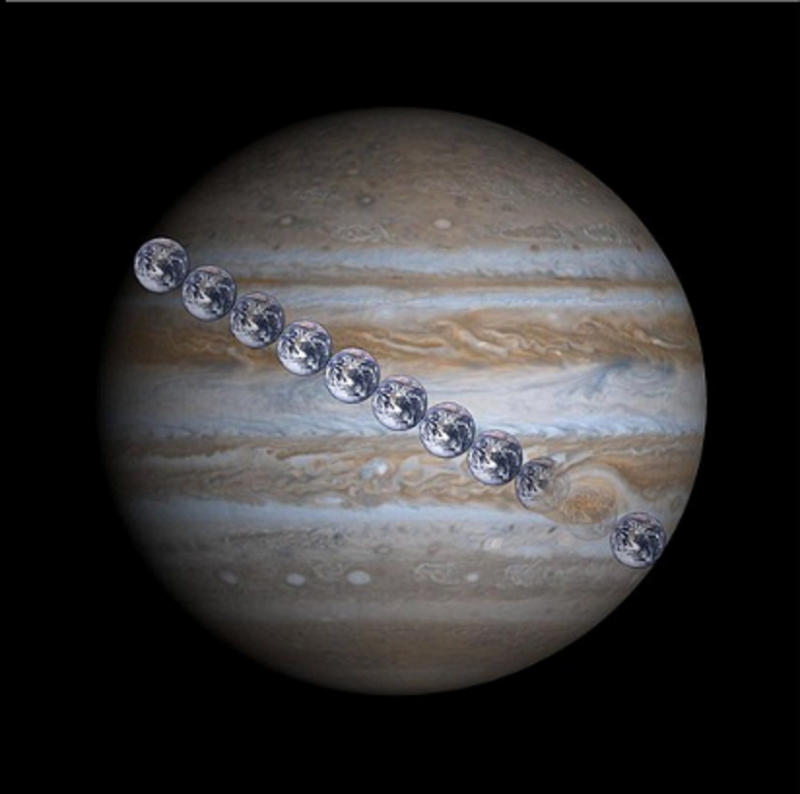On October 3 and 4, 2019, watch for the waxing crescent moon to pop out into the evening twilight. The king planet Jupiter – brightest of all the “stars” in the sky after true darkness falls – will be the first to pop into view nearby. You won’t want to miss the attractive evening couple at nightfall on October 3. They’ll be closest on that evening. The following evening, October 4, the moon will have moved past Jupiter, moving, as it always does, toward the east in orbit around Earth. Watch, as the moon waxes in phase and moves up toward Saturn, which it will pass around October 5.
Although our featured sky chart at top is especially for North America, the moon nonetheless appears quite close to Jupiter as seen from around the world. For your specific view, try Stellarium Online.
Jupiter ranks as the fourth-brightest celestial object to light up the sky, after the sun, moon and Venus. It’s highly unlikely that you’ll mistake Venus, the third-brightest celestial object, for Jupiter, or vice versa. Venus sits low in the sky at sunset and is obscured in the afterglow of sunset now, especially from Northern Hemisphere locations. Venus sinks beneath the horizon soon after sunset, but the moon and Jupiter stay out past nightfall, well into the evening. You’ll find them out until mid-evening at mid-northern latitudes and until late evening in the Southern Hemisphere.

As darkness falls, you might spot a twinkly ruddy star popping out in the vicinity of the moon and Jupiter. That’s Antares, the brightest star in the constellation Scorpius the Scorpion. Although a 1st-magnitude star, Antares pales next to Jupiter, which outshines Antares by some 16 times.
As always, the moon goes full circle in front of the constellations of the zodiac every month. The dark side of the waxing moon always points in the moon’s direction of travel: eastward.
Day by day, Jupiter and Saturn are sinking a bit lower in the evening sky. Venus, on the other hand, is climbing upward day by day. So Venus will meet up with Jupiter for a close-knit conjunction on November 24, 2019, and then with Saturn for another close-knit conjunction on December 11, 2019 (December 10 in North America).
Click here for a sky almanac providing the setting times for the sun, moon and planets in your sky.

Bottom line: Use the moon to locate Jupiter and Saturn in early October. Then watch for Venus to climb upward and to eventually meet up with these planets in the evening sky in November and December.











